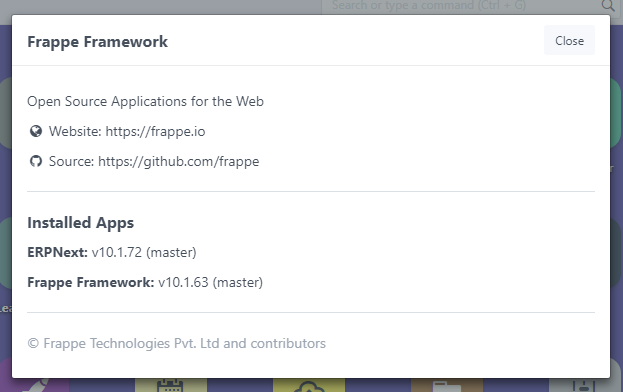Given that you have an arbitrary part number you’re investigating for some reason, and you want to know what parent assemblies have this part as a child, what is the fastest/easiest way to see a list of list of clickable part numbers?
Thanks!
Given that you have an arbitrary part number you’re investigating for some reason, and you want to know what parent assemblies have this part as a child, what is the fastest/easiest way to see a list of list of clickable part numbers?
Thanks!
Ok, I think I can help with this. My experience is in using v10 of ERPNext.
So I would open the BOM section to see the list of BOM’s in your system.
At the top of the list click on the “Add Filter” button, then in the first box type “item code” and select the one that says “Item Code (BOM item)”
Finally in the last box of the add filter line enter the Item Code that you are trying to trace back into all of the BOM’s in your list, then click the blue “Apply” button. The resulting list will contain only the BOM’s which use that part number.
Hope this helps… ![]()
BKM
Oh yeah… one last thing.
If you use this method, I believe it will only show you the lowest common denominators as far as BOM’s go. In other words, it will probably only show you the lowest level sub-assemblies that require this part. You may then also need to run the query again to see what higher assemblies make use of the associated sub-assemblies.
BKM
Thanks @bkm! I would typically be viewing an Item, and found opening a second browser instance for BOMs to be the most convenient workflow.
Could you please clarify what you mean by “lowest common denominator”. I tested your workflow with a very simple example and didn’t notice the “lowest common denominator” behavior you described. Do you mean that only the immediate parents of the child are listed, and not parents of the parents? If so, that’s ok, seeing just the immediate parents solves my problem.
Fwiw, I’ve only seen one tool that will generate a tree all the way up to all parents. It can be useful, but can also be a horrendous mess when there’s a lot of reuse of sub-assemblies among products.
Note to Developers - traversing a product tree is one of the most common tasks in engineering change management aka PLM (e.g. “how many assemblies use this part, and which ones are active?”), as well as in engineering supply chain management (e.g. "I can’t find a source for this part I’m trying to purchase, and being proactive I’d like to know what other assemblies also use this part). It would be extremely convenient to have a button or tab that gives immediate access to the parents of an item.
Yup, you got it right. You may not be able to see all the parents of the parents in the method I described, but I figured you could work with that since you are mostly interested in knowing how an engineering change will affect production.
As long as you are aware that you might have to dig deeper to see where sub-assemblies get used and how deeply nested in a top level product they may become. Since I have never met a production engineer that wasn’t very aware of how these things play out, I didn’t want to insult your intelligence with an over simplified explanation. ![]()
BKM
You may also click on Menu => Links. It will open a popup with a Hyperlinked list of all the Docs where the item was used.
Thanks for suggestion @VamYip , this would be simpler but unfortunately doesn’t find any parents for me. From the child Item, I accessed the “Links” menu as you described.
But here is the parent BOM with the child part. What am I doing wrong? Does this mean there is a problem in the database?
Cheers, Dale
I’m on v10 and it works on my system. Below are specific versions:
erpnext 10.1.15
frappe 10.1.13
If someone can confirm this issue on a different installation, then its probably a bug and can be reported on github.
Thanks,
Vamyip
The versions don’t seem to be a problem, I’m using 10.1.72 / 10.1.63. However, I started with the vm download from a couple years ago. I have updated ERPNext a couple times since (seemingly without error or issue), but haven’t updated the Linux OS - which concerns me as I’ve stumbled across deprecation notices in system error logs, but don’t want to touch the OS for fear of doing more harm than good.

Are there any standard practices used when “weirdness” happens? Should one, for example, export the database and import it into a new install?
Thanks,
Dale
Frappe (& ERPNext) is a fast rolling product. There can be some changes between my version and yours which could be triggering this behavior. Also check and undo any customization you may have.
The long route is you can compare the code changes between version I mentioned and yours and see if there’s something related.
Another option is to setup a test instance and take the shortest path to create a company, item and BOM and see if it works there.